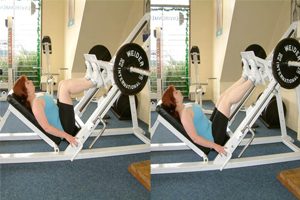Why Chiropractic is Superior for Musculoskeletal Pain
 Countless studies have demonstrated that chiropractic care is a safe and effective way to treat musculoskeletal complaints like back pain, neck pain, or sciatica. Now a new study from Switzerland has looked at the relative benefits of chiropractic compared to medical care for the most common types of pain issues.
Countless studies have demonstrated that chiropractic care is a safe and effective way to treat musculoskeletal complaints like back pain, neck pain, or sciatica. Now a new study from Switzerland has looked at the relative benefits of chiropractic compared to medical care for the most common types of pain issues.
In this study, the authors examined data from people who reported spinal, hip, or shoulder pain. 403 patients saw a medical doctor for relief; 316 people saw a chiropractor. Four months after treatment, the patients were asked to fill out a survey reporting on their recovery.
The authors found that:
- “Patients initially consulting MDs had significantly less reduction in their numerical pain rating score…”
- Patients who saw MDs were significantly less satisfied with the care they received and the outcome of that care.
- Patients who saw a chiropractor had significantly lower healthcare costs for their treatment.
The authors conclude that patients should first be sent to a chiropractor for musculoskeletal problems, rather than a medical doctor:
“The findings of this study support first-contact care provided by DCs as an alternative to first-contact care provided by MDs for a select number of musculoskeletal conditions. Restrictive models of care in which patients are required to contact a medical provider before consulting a chiropractic provider may be counterproductive for patients experiencing the musculoskeletal conditions investigated and possibly others. In addition to potentially reducing health care costs, direct access to chiropractic care may ease the workload on MDs, particularly in areas with poor medical coverage and hence enabling them to focus on complex cases. The minority of patients with complex health problems initially consulting a chiropractic provider would be referred to, or comanaged with, a medical provider to provide optimal care.”
Houweling TAW, Braga AV, Hausheer T, et al. First-Contact Care With a Medical vs Chiropractic Provider After Consultation With a Swiss Telemedicine Provider: Comparison of Outcomes, Patient Satisfaction, and Health Care Costs in Spinal, Hip, and Shoulder Pain Patients. Journal of Manipulative and Physiological Therapeutics 2015;38(7):477-83.
 Sciatica pain is often so debilitating that it forces people to miss work and other normal activities. Of all patients with low-back pain, sciatica patients have the highest level of disability (1). In fact, patients with sciatica are disabled for an average of 72 days according to Norwegian public-health records.
Sciatica pain is often so debilitating that it forces people to miss work and other normal activities. Of all patients with low-back pain, sciatica patients have the highest level of disability (1). In fact, patients with sciatica are disabled for an average of 72 days according to Norwegian public-health records. Back pain is an expensive health problem for both patients and businesses.
Back pain is an expensive health problem for both patients and businesses. 


 Most people at some point have heard cracking or grinding noises in their neck upon movement. These sounds, also called crepitus, are usually painless and typically do not represent anything serious.
Most people at some point have heard cracking or grinding noises in their neck upon movement. These sounds, also called crepitus, are usually painless and typically do not represent anything serious. When it comes to helping elite athletes prevent and recover from injuries—as well as achieve peak performance—chiropractic care can offer many advantages. That’s why large numbers of professional and college sports teams throughout the U.S. have turned to chiropractors over the past decade. The Philadelphia Phillies is one such team, and Dr. Michael Tancredi is one such chiropractor. As a Doctor of Chiropractic, a Certified Chiropractic Sports Physician, an Active Release Technique Instructor and Practitioner, and a certified athletic trainer, Dr. Tancredi clearly understands the valuable role that chiropractic care can play in keeping teams healthy and performing at their best.
When it comes to helping elite athletes prevent and recover from injuries—as well as achieve peak performance—chiropractic care can offer many advantages. That’s why large numbers of professional and college sports teams throughout the U.S. have turned to chiropractors over the past decade. The Philadelphia Phillies is one such team, and Dr. Michael Tancredi is one such chiropractor. As a Doctor of Chiropractic, a Certified Chiropractic Sports Physician, an Active Release Technique Instructor and Practitioner, and a certified athletic trainer, Dr. Tancredi clearly understands the valuable role that chiropractic care can play in keeping teams healthy and performing at their best.
 Did you know that fully a quarter of your body’s bones are in your feet? These complex marvels of engineering by Mother Nature provide your body with a firm foundation, and are constantly in demand to help move the body from one place to another. With 19 muscles and 26 bones each, your feet are important for the balance and health of the entire body.
Did you know that fully a quarter of your body’s bones are in your feet? These complex marvels of engineering by Mother Nature provide your body with a firm foundation, and are constantly in demand to help move the body from one place to another. With 19 muscles and 26 bones each, your feet are important for the balance and health of the entire body.